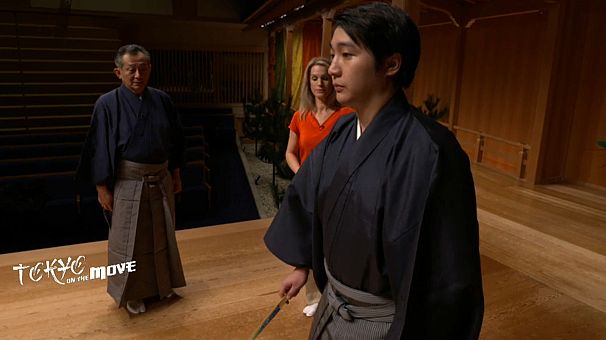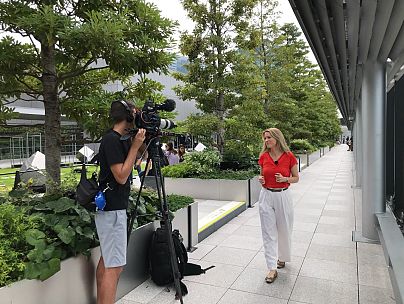Ginza lies in the heart of Tokyo. Here upmarket shopping and futuristic architecture meet traditional Japanese culture and design. The old and new link together - as you can see at the city’s latest and most luxurious shopping mall, Ginza Six.
The district of Ginza lies in the heart of Tokyo. Here, upmarket shopping and futuristic architecture meet traditional Japanese culture and design. The old and new link together - as you can see at the city’s latest and most luxurious shopping mall, Ginza Six.
The building has strikingly modern architecture – and if you look closely there are nods to Japan’s rich past - like arches which recall the traditional Noren curtains hung at the entrances of Japanese shops.
A futuristic design - inspired by traditional architecture.
The Ginza Six boasts an array of high end brands, but it’s much more than just retail therapy.
The minute you walk in, you’re struck by the contemporary Japanese artwork all around. Every few months, a new artist in residence creates an installation designed especially for the space here. And there’s even an art gallery inside.
Gwenael Nicolas is the man with the vision behind the vast atrium space. A French designer, he’s spent more than 25 years living and working in Tokyo.
“The core of Ginza Six, is also the core of Ginza - that was the idea,” says Gwenael. “When you see the whole atrium it looks like a large spiral - so you have horizontal lines - that are going one way - and when you go into the alleys - you see they are not straight. As you can see in the small streets, small shops pop up - it actually creates individual space. And I wanted to recreate this feeling in this large space.”
He shows euronews reporter Naomi Lloyd the alleyways of Ginza that influenced his design.
“In Japan nothing is straight,” he says. “It’s a question of layers of discovery. You arrive and the first impression of connecting with the culture, to the religious aspect of it. You don’t separate past and future, it’s just part of it.”
One of the oldest theatre arts in the world
Another art form that’s weaving the past into the future is Noh – one of the oldest theatre arts in the world, that has strong roots in Ginza. The famous Kanze theatre now has its home inside the Ginza Six.
Reporter Naomi Lloyd is the first foreigner to be invited onto the stage and try out some Noh moves.
Kiyokazu Kanze is the grand master and it was his family who founded the Kanze school of Noh, more than 700 years ago.
“My ancestors had their home in Ginza during the Edo era, and lived there for 243 years,” he explains. “And now 150 years later my family have returned to Ginza - so that’s why this neighbourhood is a very important place for me.
“My ancestor named Ze-Ami created this Noh and his works include a lot of universal themes. So we can say that this is the reason why it has continued for 700 years without interruption. I feel my responsibility is to keep Noh alive from the past into the future.”
Although quintessentially Japanese - the Kanze theatre’s aim is to open up this ancient musical drama to visitors from other countries when they come to Tokyo.
What is striking is how Tokyo’s past is very much alive in the present - the two coexist for Japanese people. As a visitor you feel welcomed in and get to experience that for yourself.














